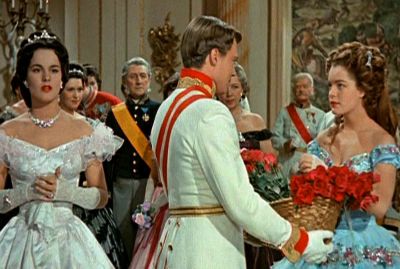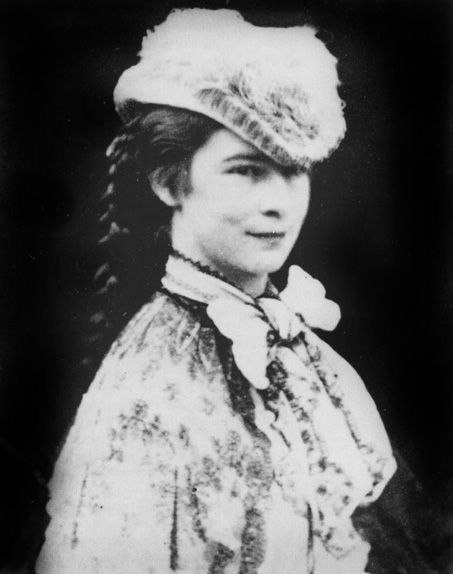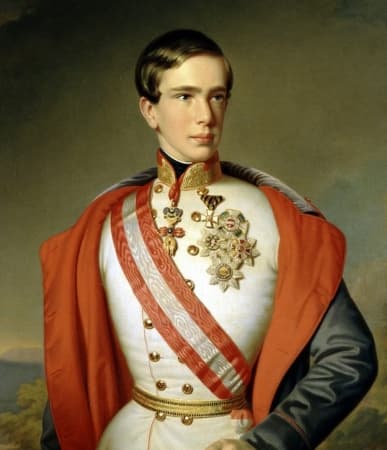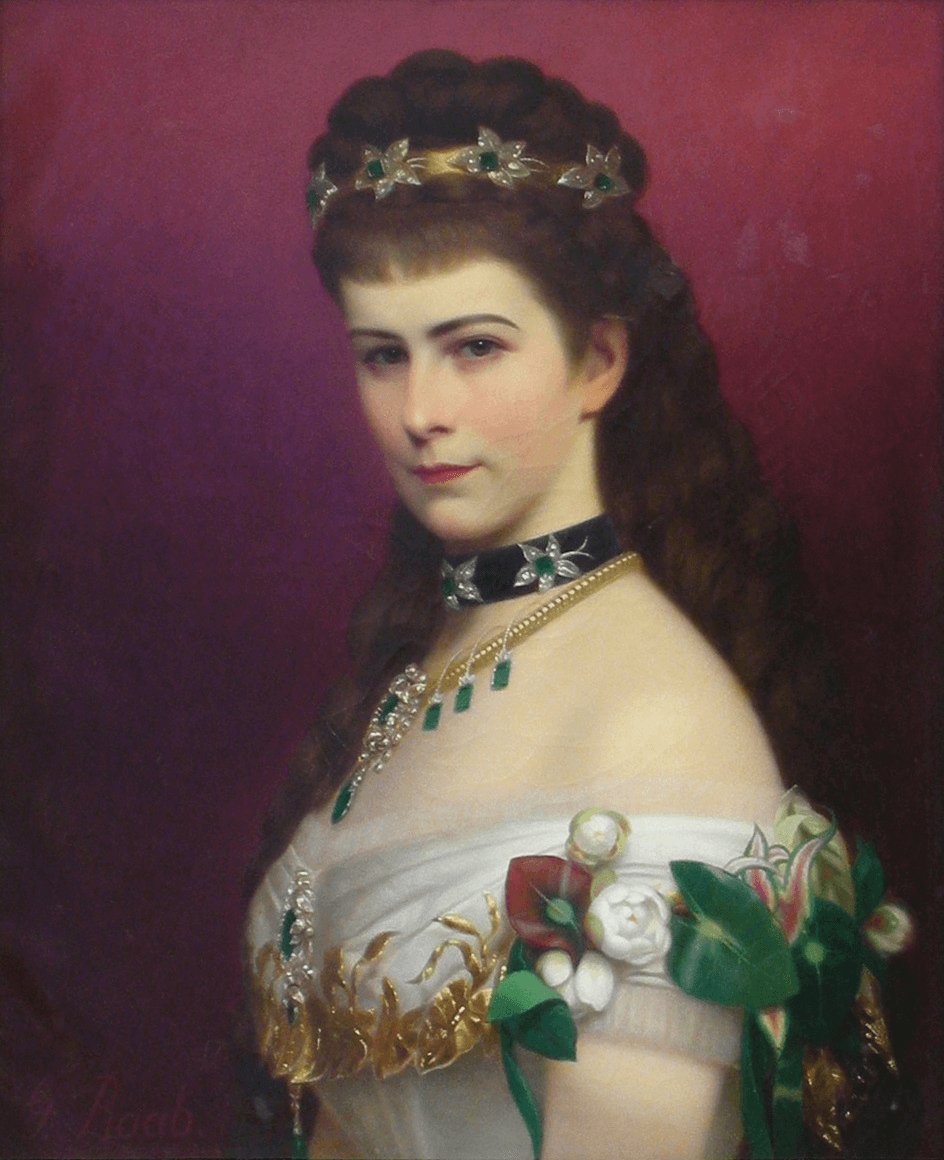Achilleion palace, Corfu Greece
The Achilleion, Sisi’s palace on Corfu, Greece
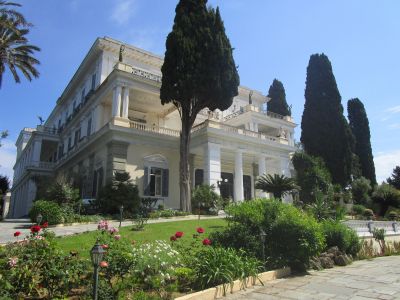 Achilleion Palace, Corfu
Achilleion Palace, CorfuI completely understand why Empress Sisi loved this island. The weather, views, food, and people are all wonderful. If you have a few hours to spend while vacationing on the lovely island of Corfu, I strongly recommend taking a tour of the beautiful Achilleion Palace!
DISCLOSURE: I get commissions for purchases made through some of the links in this article.
Ode to the ancient Greek in the gardens of Achilleion
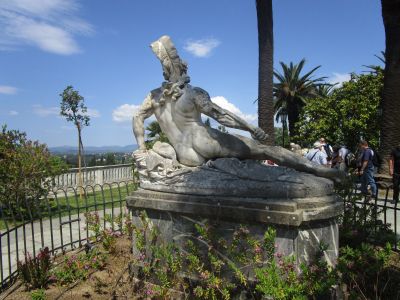 Statue of the wounded Achilles at the gardens of Achilleion Palace
Statue of the wounded Achilles at the gardens of Achilleion PalaceThe palace is situated on a hill near the small village of Gastouri, offering breathtaking views of the surrounding hills, sea, and the distant city of Kerkyra (Corfu city).
To ensure easy access to the estate when arriving by boat, Sisi (or, in fact, Franz-Joseph) purchased all the surrounding land that leads down to the sea.
The Italian architect Raffaele Caritto did a wonderful job designing this lovely palace in honour of the Greek hero Achilles.
Sisi was deeply interested in Greek history, culture, and mythology. She was fluent in both ancient and modern Greek.
Ernst Herter, a German sculptor, created many works inspired by Greek mythology, including "The Wounded Achilles," which was the centrepiece of Sisi's garden.
The garden was adorned with beautiful statues of centaurs, Muses holding torches, Greek gods, and even a Greek courtesan from the 4th century BC. These statues could be found on the terrace, in the garden, and on the balconies and roof.
Empress Elisabeth of Austria, commonly known as Sisi, commissioned the construction of a palace on the beautiful Greek Island of Corfu in 1890. She named the palace after her hero Achilles, the Greek mythological half-god, known for his role in the Trojan War.
The estate is adorned with Greek mythology-themed decorations, and a statue of Achilles can be found in the palace gardens.
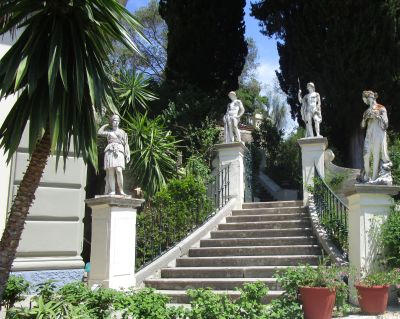
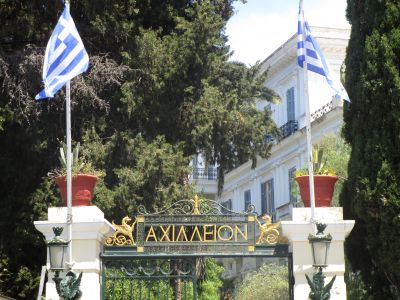 Entrance Achilleion
Entrance AchilleionSisi's Corfu Escape
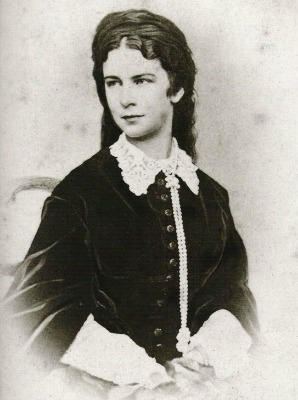 Empress Elisabeth of Austria (Sissi)
Empress Elisabeth of Austria (Sissi)Sisi would visit the place frequently in the years to come, to relieve her from the depression that followed after the death of her only son. On January 30, 1889 Crown Prince Rudolf killed his mistress and took his own life. This tragic event, known as the Mayerling incident, shattered Sisi and drove a deeper wedge between her and Franz Joseph.
Sisi spent the time reading and studying, hiked and roamed the Island on horseback.
Frans Joseph only visited the island of Corfu once for two days, and even then he did not spend the night in the Achilleion. By that time the marriage of Sissi and Franz-Joseph was as good as over and they only spent time together on very rare, official occasions.
The Achilleion became Sisi's refuge, a place far from the pressures of Vienna and the emotional distance in her marriage. Here, she could grieve, explore her passions, and create a life more in line with her desires.
Sisi & Ich (2023)
This German historical black comedy tells a fictionalized story of Empress Elisabeth of Austria (Sisi) from the perspective of her lady-in-waiting, Countess Irma Sztáray.
The Achilleion Palace in Sisi & Ich:
- Setting for Freedom: The film depicts the Achilleion Palace on Corfu as a place of escape for Sisi. She lives there in relative freedom, indulging in intellectual pursuits and enjoying the outdoors, far from the constraints of court life in Vienna.
- Not Actually Filmed There: It's important to note that the movie wasn't filmed at the actual Achilleion Palace in Corfu. Productions often use alternative locations due to filming restrictions or logistical reasons.
While the movie takes some creative liberties, it highlights the historical significance of the Achilleion Palace as a refuge for Sisi during a time of personal turmoil.
Interior of the Achilleion Palace
The palace doesn't have loads of rooms for us to check out, but the ones that we can visit are super pretty and totally worth seeing.
The main entrance hall and staircases are simply amazing, with all sorts of gorgeous paintings, colourful frescoes, and statues everywhere.
The little chapel is also really sweet, and there are some pretty interesting things on display that used to belong to the palace's owners, Empress Elisabeth and Emperor William II.
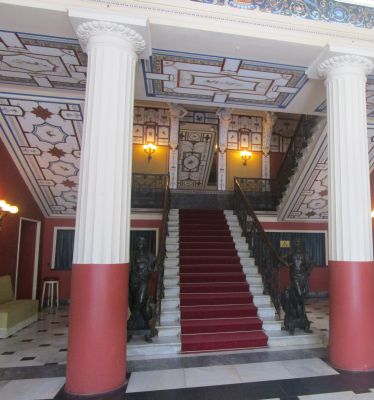 Sisi's Steps: The Achilleion's Main Staircase
Sisi's Steps: The Achilleion's Main Staircase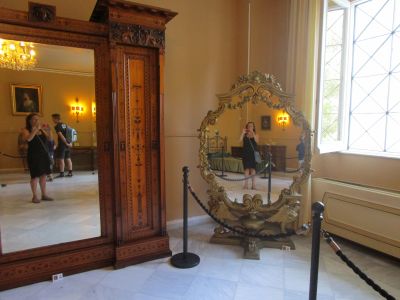 The cracked mirror in the bedroom of Sissi (by the way, that's me in the reflection!
The cracked mirror in the bedroom of Sissi (by the way, that's me in the reflection!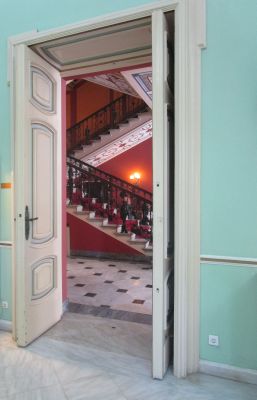
The Achilleion palace holds some interesting anecdotes about the life of Empress Sisi.
One such anecdote is that all the clocks displayed in the palace have their hands removed. The reason behind this is that Sisi did not want to be reminded of the time passing and neither did she want to live according to a strict timetable.
Another interesting fact is that during her last stay in Sisi's bedroom, the large mirror cracked. At that moment, she predicted to her lady-waiting that this would be her last visit to the island of Corfu. Unfortunately, her prediction turned out to be true, as she was assassinated by Luigi Luccheni in 1898.
It is also worth noting that Corfu was a place where Sisi could relax and not have to obey the strict protocol that ruled the court. This can be seen in the way she dressed, as she had a special wardrobe that she only wore while on the island. If you are interested in finding out more about Sisi's Corfu dresses, you can read about them in detail on this page here.
Kaiser's Brief Reign: Achilleion Becomes a Battlefield Hospital
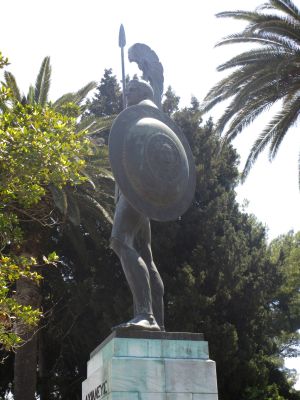 A triumphant Achilles, the way Kaiser Wilhelm preferred him.
A triumphant Achilles, the way Kaiser Wilhelm preferred him.Following the passing of Empress Elisabeth, the Achillion Palace remained vacant for nine years until it was acquired by Kaiser Wilhelm II of Germany.
The Kaiser's intentions were to restore the palace and make it a grand residence befitting of his stature. However, his actions were not without controversy. Upon his acquisition of the palace, the Kaiser removed the statue of the dying Achilles from its prominent position in the garden and replaced it with a large and imposing statue of a triumphant Achilles made of iron and bronze.
The Kaiser's inscription on the statue, "To the Greatest Greek from the Greatest German," was eventually removed after the war.
The Kaiser only enjoyed the palace for a short period of time before the onset of World War I, during which the Achilleion was used as a hospital for French and Serbian troops. After the war, the palace became the property of the Greek state.
The Achillion Palace holds a significant place in history and continues to be an important cultural landmark.
Achilleion Palace Tours and Tickets
The Achilleion Palace interior is currently under construction and not accessible to visitors. However, visitors can still enjoy the gardens.
The good news: you can take a virtual tour of the Achilleion palace!
Go to the official website of the Achilleion and click VIRTUAL TOUR.
How to get to achilleion palace from corfu town
There are four ways to get from Corfu Town to the Achilleion Palace:
- By bus: This is the cheapest option and takes about 24 minutes. Buses depart hourly from the bus station in Corfu Town and the fare is €1-€2. You can take bus number 10 to get there.
- By taxi: This is the fastest option and takes about 10 minutes. Taxis can be found at the taxi rank in Corfu Town or hailed on the street. The fare will be around €19-€24.
- By car: This is a convenient option if you have a rental car. The drive from Corfu Town to the Achilleion Palace takes about 22 minutes and the distance is 11.3 kilometers. There is parking available at the palace.
- Book a tour from Corfu city.
